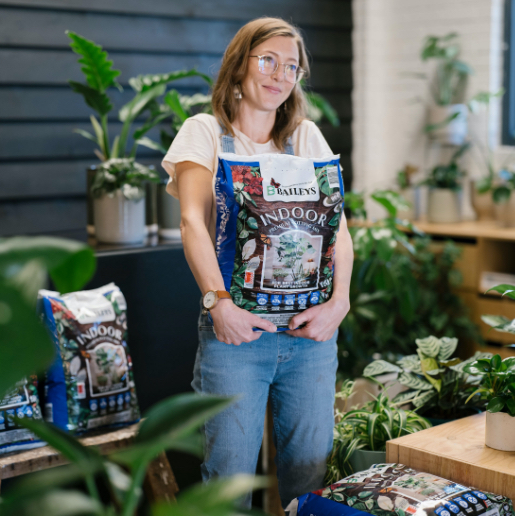
Join our Great Gardens Club!
Sign up to enjoy 15% off your first purchase from Baileys online. Plus, get our monthly WA gardening tips, latest news and promotions straight to your inbox.

Sign up to enjoy 15% off your first purchase from Baileys online. Plus, get our monthly WA gardening tips, latest news and promotions straight to your inbox.
Varieties
Strawberries can be established from crowns or runners, or grown from seed. Growing strawberries from seed isn't for the impatient gardener, as most plants will only bear fruit a year after planting. It's quicker and easier to purchase in small pots from your local nursery. Choose varieties that can handle the hot Western Australian climate - there are many varieties to choose from so read the label to see which suits you best.
Planting
These herbaceous plants love fertile, organic rich, well-draining soil, without too much competition from other plants. They grow best in a pH around 6.5, but will grow in the pH range 5.5 to 7.5.
Strawberries grow best in full sun, but will benefit from afternoon shade in WA's hot summers. They're best grown in large pots up off the ground so it's easier to control pests and allows you to move then throughout the year to suit the climate.
They will grow happily in a variety of containers and planters, horizontally, vertically, or even upside down from hanging baskets. Plant directly into quality potting mix made to Australian Standards, such as Baileys Premium Potting Mix or Veg & Herb Planting Mix.
If planting in the ground or raised beds, keep this in mind and choose a position accordingly. Prior to planting, dig over the soil to remove weeds and any large clods and add in plenty of mature compost and aged animal manure or blood and bone. The addition of Baileys Clay & Compost and Soil Improver Plus is ideal.
Position your plants about 30cm apart. The crown of the plant, which is the swollen stem base, must be left at the surface of the soil and not buried too deep. When transplanting, soak roots in a weak solution of seaweed extract to assist rooting.
Watering
Water well, especially when the young plants are establishing, keeping the soil moist but not too wet. A drip watering system is ideal for garden or raised beds. Be careful with hanging baskets as they can dry out quickly.
Feeding & Care
In beds surround each plant with a layer of straw mulch. This stops the fruit from touching the soil, prevents weeds and maintaining moisture.
Sprinkle a small handful of an organic based, complete fertiliser high in potassium around each plant as it comes into first flower, use Baileys Soil Matters Garden. From then on apply a liquid fertiliser designed for fruit and flowers every 3 weeks, such as Baileys Vitaplant.
Remove runners and dead leaves during fruiting to increase yield. After fruiting has finished, tidy up the bushes by giving them a hard prune down to 10cm.
After 3 years, plants become under productive. Use runners to propagate new plants in new pots or beds and remove old plants, or buy new virus-free stock.
Harvest
Different varieties will be ready to harvest at different times, usually 12 weeks from planting. For the fullest flavour, pick at the right degree of ripeness, when fruits are shiny and have developed a good colour. Keep a watch out, as the fruit ripens quickly and can deteriorate or be eaten-up by critters. To avoid bruising ripe fruit, harvest using scissors and leave a small piece of stalk attached.
Pest & Disease
A lot of creatures love Strawberries as much as we do. Birds, slugs, snails and even man's best friend compete for the luscious fruit.
Check for snails and slaters. Copper banding can be placed around the tops of pots to prevent snails and diatomaceous earth sprinkled around the base of the plants will control slaters.
A common fungal disease is botrytis which looks like a fuzzy grey or off-white growth on the fruit. The leaves can show wilting, yellowing and circular black spots. Avoid overhead watering as the fungal spores travel by water splash and are also air borne. Try not to overcrowd the plants and allow lots of air circulation.
Another disease to avoid is verticillium wilt which is soil born. The roots become infected, blocking up the flow of water and nutrients. Rip the plants out and don't replant strawberries again in the spot. Tomatoes and potatoes also suffer from this disease so keep them all separated.